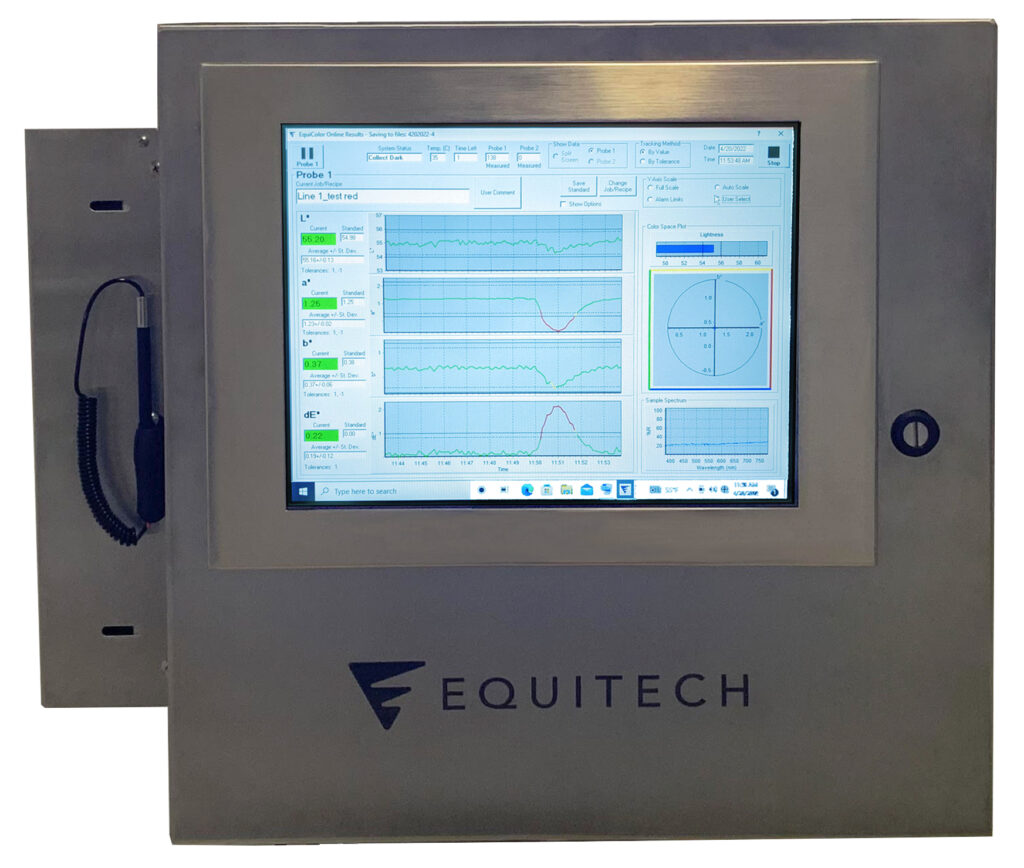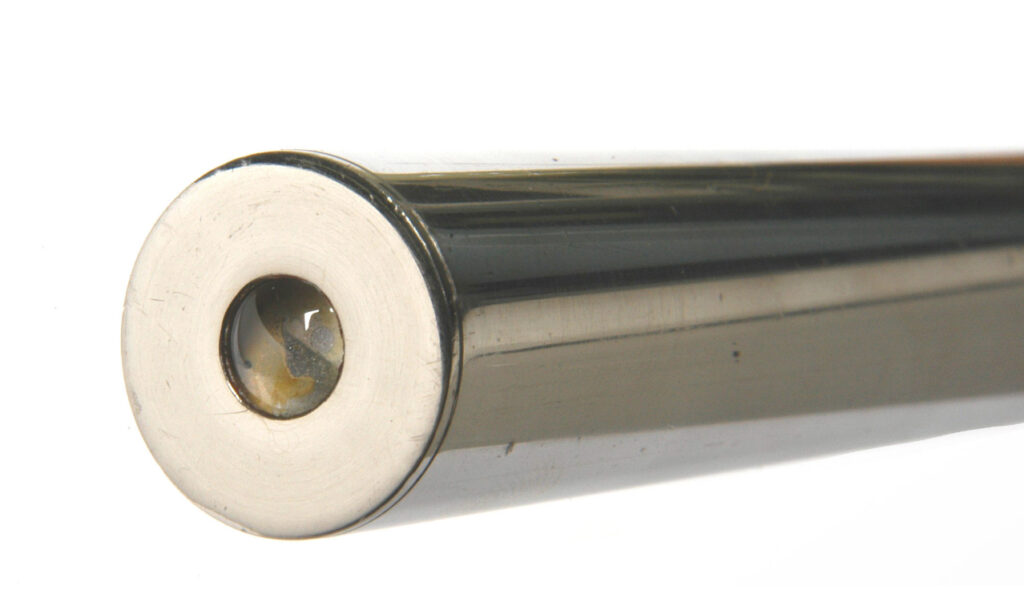IN-LINE YELLOWNESS MEASUREMENT
INTRODUCTION
When exposed to UV light, chemicals and processing conditions (i.e. high temperatures), raw materials and finished products will stain, soil, scorch, burn and degrade. This affects their visual characteristics and can produce a yellow tint. The yellowness observed is a condition where the light is absorbed in the blue part of the spectrum.

YELLOWNESS IN PLASTICS
Chemical and physical mechanisms are responsible for changing the properties of polymer chains. When these changes take place, yellowness may be observed in several chemicals and plastics. Some of them are:
Polyvinyl Chloride (PVC)
Polypropylene is very prone to thermal oxidative degradation due to an alternative tertiary C atom in the main backbone. It leads to chain scission and unsaturation in PP, which is responsible for yellowing. The appearance of yellow may indicate high extrusion temperatures and low antioxidant doses.
Polyvinyl Chloride (PVC)
PVC is known for its low thermal and low light stability during processing and handling. Exposure to either one or both can cause degradation issues due to a dehydrochlorination reaction. The introduction of chemical groups into degraded PVC chains can result in the appearance of yellowness.
Polycarbonate (PC)
In PC, the energy absorbed from UV radiation promotes the scission of the carbonate linkage, forming two primary free radicals according to the photo-Fries mechanism. The free radicals then rearrange to form other molecules. Oxidation of these molecules results in substances such as ortho-dihydroxybenzophenone or diphenoquinone, which absorb in the blue range and are responsible for the yellowing observed in photo-degraded samples.
Purified Terephthalic Acid (PTA)
Polymer-grade terephthalic acid (TA) is one of the basic building blocks in the production of linear polyester resins used to manufacture polyester fibers, polyester film, packaging materials, and bottles. PTA used in the manufacture of polyester resins must meet specific minimum purity requirements. The purified condition of terephthalic acid refers primarily to the absence of significant concentrations of 4-carboxybenzaldehyde (4-CBA), p-toluic acid, and other aromatic compounds such as benzyls, fluorenones, and anthraquinone that impart a characteristic yellow hue to the crude material.
Polyethylene Terephthalate (PET)
Gray or yellow discoloration may occur during repeated poly (ethylene terephthalate) (PET) heating. The antimony content present in catalyst residues used in PET synthesis strongly influences the gray discoloration obtained during the reprocessing of PET. The yellow discoloration is partially generated by polyamide contaminants used as barrier layers in PET packaging materials such as soft drink bottles.

YELLOWNESS MEASUREMENT
The yellowness index (YI) is a spectrometric calculation used to describe any change in the color of a test sample from clear (white) toward yellow. In industries, yellowness is measured in terms of “delta YI” denoted as ΔYI. This test is mainly based on determining a product’s color difference at any given point in the product’s life cycle versus the original product.
Yellowness indices quantify liquids and solids in transmission and opaque solids in reflectance.
INNOVATION
The EquiSpec In-Line Process Spectrophotometer (IPS) is a high-performance instrument designed for use in an industrial process. Its excellent sensitivity and flexibility make it helpful for process applications involving process lines or mixing tanks. The analyzer and process probes are designed for high-temperature, high-pressure and corrosive environments. It can analyze powders (solids), liquids, gases, or slurries depending on the employed process probe. This system is perfect for monitoring the yellowness index or b* of polymers or powders, including purified terephthalic acid (PTA), during or after material drying.
With in-line yellowness measurements taking place directly in the manufactured product, complete documentation is possible, and immediate intervention can occur when degradation occurs. In addition, the IPS eliminates many steps of the offline method, and the measured results are available in real-time.
USER BENEFITS
• Real-time monitoring yellowness and b* of liquids & powders
• Real-time monitoring of product purity and clarity
• Accountability tracking for sensitive materials
• Waste reduction
• Reaction optimization

CONTACT US
Equitech Int’l Corporation
7711 Idlewild Road, Indian Trail, NC 28079
Tel +1-704-882-4624
[email protected]
equitechintl.com
